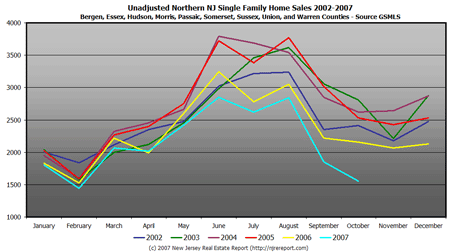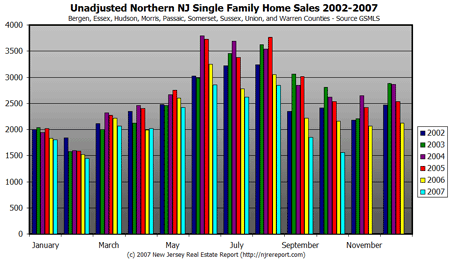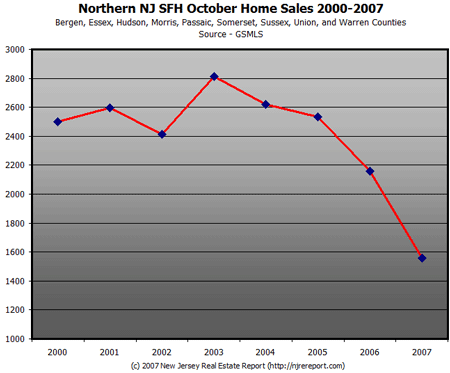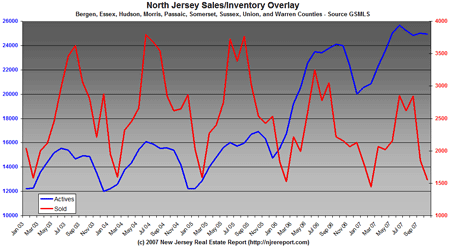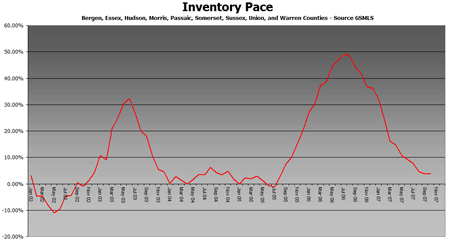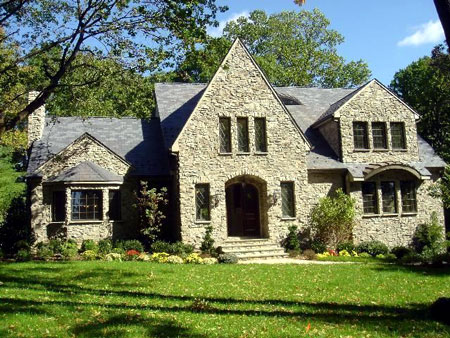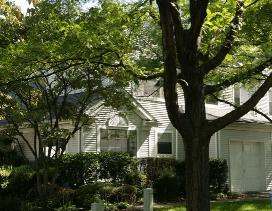House prices soar for years, until even small starter homes are out of reach for first-time buyers. The air seeps out of the real estate market, and property sales — and prices — drop.
Sound familiar? That scenario could be describing the housing market of this decade — or an earlier market cycle that took place in the 1980s and early 1990s.
Looking back at that earlier downturn offers clues to how this cycle will play out. One lesson: Housing slumps can last a long, long time.
“Economic wild parties are followed by prolonged economic hangovers,” said James Hughes, a Rutgers economist who follows the New Jersey housing market. “Anytime there’s a sharp run-up like that, you’re going to have to have a correction.”
…
In the 1980s, house prices rose rapidly as baby boomers began forming households and buying homes. At the same time, New Jersey was shedding its old identity as a manufacturing economy and creating thousands of new, well-paid white collar jobs as pharmaceutical and telecom industries flourished.
From 1980 to 1988, home prices rose 145 percent in the state, Hughes said. Then, around 1988, prices began to fall.
A recession that began in 1990 deepened the housing slump. For New Jersey, it was the worst economic downturn since the Great Depression, costing the Garden State 250,000 jobs and bumping the unemployment rate to 8.5 percent in 1992.
“That reduced housing buying power significantly,” Hughes said.
House prices in the state declined 8 percent from 1988 to 1992 before turning up again. But it took until 1998 before houses returned to the peak of 1988, Hughes said. And if you adjust for inflation, it took until 2002 for house prices to recover to their 1988 levels.
…
Overall, from 1998 to 2006, home prices in New Jersey rose 135 percent — almost as much as in the earlier boom, Hughes said.
As prices rose and houses became less affordable, lenders began offering exotic mortgages, such as interest-only, no-money-down and no-income-verification loans. Many of these products were aimed at subprime borrowers — buyers who couldn’t get mortgages in the mainstream market.
“The floodgates opened up,” said Keith Gumbinger, vice president of HSH Associates, a Pompton Plains company that follows the mortgage market. “Many, many people who normally couldn’t jump into the fray did jump into the fray.”
But many of them jumped in with mortgages that were time bombs. The loans started out with reasonable interest rates that would adjust upward — way upward — in later years. Now some of those buyers are having trouble paying their loans. That situation is expected to worsen, as mortgage interest rates continue to ratchet higher on many loans over the next couple of years.
…
Since the peak of the market in late 2005, house prices in the state have declined by 5 percent to 10 percent, depending on location and other factors. High-end houses costing $1 million or more, in particular, seem to be languishing.
“If you bought two years ago, you’re going to sell for less than you paid,” said Jeffrey Otteau of the East Brunswick-based Otteau Valuation Group Inc.
Not all towns have suffered equally. Otteau said that the towns that have held more of their value include those in easy commuting distance of New York City, including much of Bergen and Hudson counties.
…
But most housing analysts predict there won’t be a rebound before 2009 at the earliest — and some say it will be 2011. That’s good news for buyers, but tough on sellers and businesspeople who depend on a robust real estate market.
“While there are some bright spots, for the most part it’s a bit gloomy,” Otteau said. He predicts prices in New Jersey to be down 7 percent for this year and 4 percent for next year.
And if there’s an economic downturn, housing will be even harder hit.
“If there’s a recession in 2008, all bets are off for housing,” Otteau said. “It would be a collapse.”
